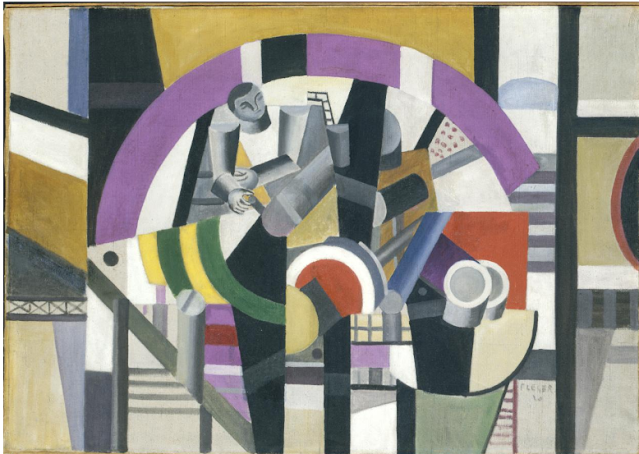Fernand Leger, "The Aviator"
To examine great works of Art is often a study in history. It is looking back at another generation, another time. One of the essential components of Art which rises above the average, is for it to reflect the time it was created. Then, giving us, the viewer, the opportunity to see beyond history's calendar events, into the true life, emotions, tasks, and challenges of average people.
Our artist this week is Fernand Leger (1881-1955). He was a French artist beginning his life with training as an architect and supporting himself as a draftsman. Moving to Paris he met young artists involved with the new trend of cubism. HIs prior education encouraged a new career as an artist, with solid structures of rectangles, tubes, cones and cubes. World War I interrupted his life and he saw service on the front lines. Shortly after, in 1919 he married, and he resumed his art career.
Our painting for this week was completed in 1920. Here the key to understanding the painting seems to be in the title and the date completed. An airplane, a pilot and a plane: knowing this and looking into it, we begin to see we are looking straight at the front of a plane, with the pilot in his seat at the top. There are no indications of sky, so safe to assume the plane has not taken off. Do remember that aviation, airplanes were very new in 1920, and WWI was the first time they were used in war. Leger transformed a object and subject new to most people deconstructing it into rectangles, cones and created this amazing painting.
"The Aviator" is part of the permanent collection of the Cleveland Museum of Art, in Cleveland, Ohio. Unframed it measures 25 9/16 of an inch high and 36 1/4 inches wide. It is an oil on canvas completed in 1920.
Make Art a part of your life, it's a beautiful thing to do.



I found your description helpful in understanding the painting. His architectural background is evident. Since there were only prop planes at that time, do the circular shapes represent propellers?
ReplyDeleteI notice he repeats all the colors several times, helping to unite the fractured feeling. Vertical and horizontal lines lead us to the pilot. I wonder why his hands are close together rather than on controls of the plane. It is fun to study the details and imagine how they relate to the subject. It is a strong, solid work. I like it a lot.